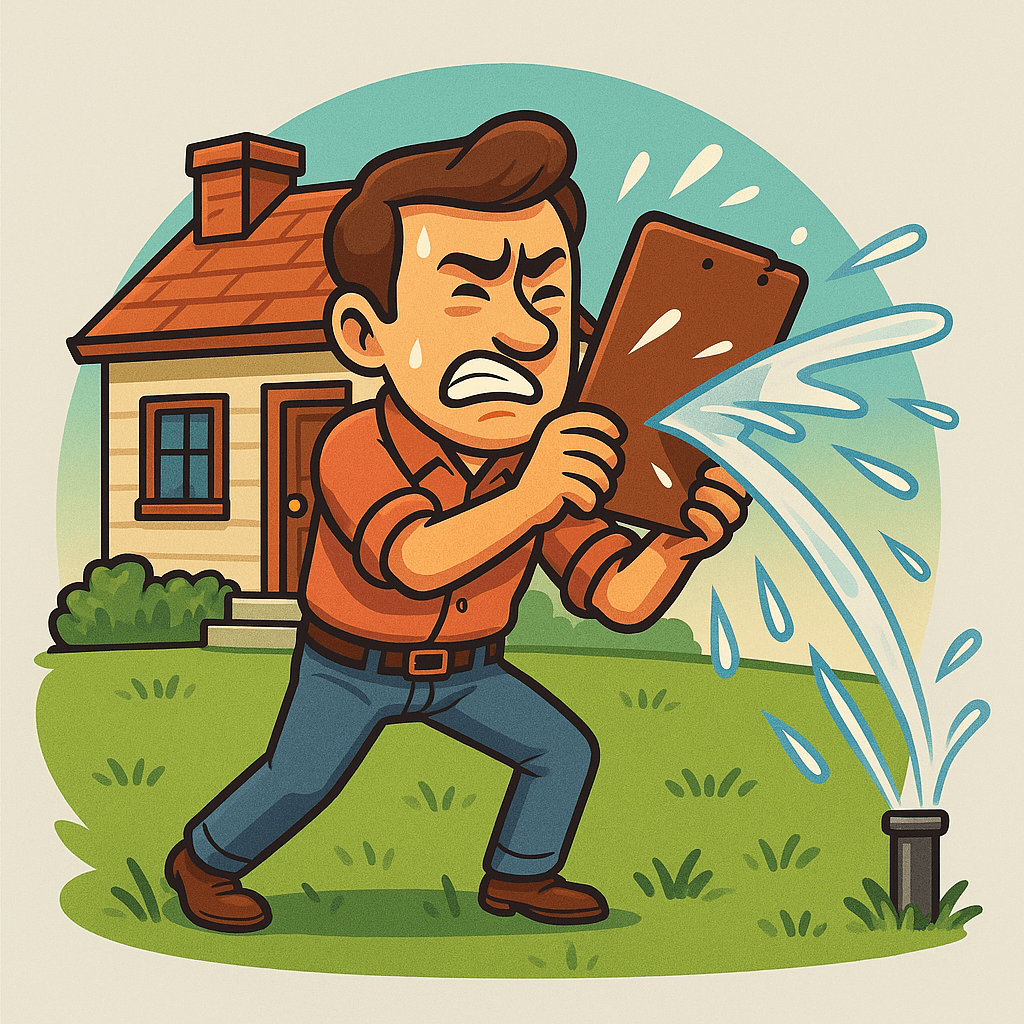As the last traces of winter melt away, many homeowners across Southern Ontario are ready to shake off the cold and prepare for the sunny months ahead. Spring is a transitional season — one that offers the perfect window to get a jump on summer prep before the heat really sets in.
We want to help you make the most of the warmer weather. Whether it’s keeping your lawn lush or preventing pests before they become a nuisance, a little preparation now can make your summer more enjoyable, more comfortable, and a lot less work.
Let’s start with one of the most important seasonal tasks: restarting your sprinkler system.
When to Turn On Your Sprinklers in Windsor-Essex
If you’ve winterized your sprinkler system in the fall (which is always a good idea in Ontario’s climate), you’ve protected your irrigation lines from freezing damage. But once spring hits, it’s important to know when it’s safe to bring your system back online.
The general rule for Southern Ontario is this: wait until nighttime temperatures are consistently above freezing. This usually occurs by mid-to-late April, although local variations (like proximity to Lake Erie or elevation changes) might shift this date slightly.
Why is this important? Starting your irrigation system too early — when there’s still a risk of frost — can cause underground pipes to crack or burst. Even a single night with temperatures dipping below zero can undo all the effort you put into maintaining your system.
Once you’re confident the danger has passed, you’re clear to begin your seasonal sprinkler checklist.
Sprinkler System Start-Up Checklist
1. Inspect Sprinkler Heads for Damage or Leaks
- Cracks or chips
- Clogged nozzles
- Misalignment or tilting
- Heads that don’t rise or retract properly
2. Test Zones Individually for Coverage
- Do all heads activate?
- Are they spraying in the intended direction?
- Are any zones underperforming?
Look for water pooling in low areas, uneven coverage, or zones that fail to activate altogether. These issues could indicate leaks, clogs, or valve malfunctions. It’s easier to fix them now than mid-July when your lawn is already stressed from the heat.
Pro Tip: Use this test as an opportunity to mark trouble spots for later repair — or book a professional if you notice inconsistent pressure or odd behavior in the system.
3. Schedule Watering for Early Morning
Timing is everything when it comes to efficient irrigation. Early morning watering — between 5 a.m. and 9 a.m. — is ideal.
Why?
- Cooler temperatures mean less evaporation, so more water reaches the roots.
- Winds are typically calmer, reducing spray drift.
- Lawns have time to dry during the day, which helps prevent fungal growth.
Pest Prevention Starts With Proper Watering
Here’s a pro pest control tip that often gets overlooked: watering wisely can help reduce backyard mosquito activity.
Mosquitoes lay their eggs in standing water, even in amounts as small as a bottle cap. That means leaky sprinkler heads, pooling at the end of a slope, or overwatered garden beds can all become mosquito nurseries.
By following the tips above, you’re not just taking care of your lawn — you’re also cutting down the number of places mosquitoes can breed. Here’s how it works:
- Fixing leaks = no puddles around sprinkler heads
- Testing coverage = no overspray onto patios or sidewalks
- Morning watering = less chance of saturation and standing water
Quick Recap: Summer-Ready Sprinkler Tips
✅ When to Turn Sprinklers On:
- Mid-to-late April in Southern Ontario
- Wait until overnight lows stay above freezing
✅ Tips for Safe Startup:
- Check heads for cracks, clogs, and damage.
- Run each zone manually to verify coverage.
- Water early in the morning to minimize evaporation.
✅ Bonus Pest Tip:
- Smart watering helps eliminate standing water, which reduces mosquito breeding grounds.
Final Thought: A Well-Prepped Lawn Is a Pest-Free Lawn
With warmer weather comes increased outdoor activity — barbecues, patio dinners, and evenings by the firepit. Don’t let a failing sprinkler system or a mosquito infestation ruin that experience.
Tuning up your irrigation setup in April sets the stage for a healthy lawn, better curb appeal, and a pest-smart property all summer long.
We’ll be sharing more summer prep tips over the coming weeks, covering everything from tire changes to garden care and lawn pest prevention. Be sure to follow along, and if you ever need a hand — whether it’s pest-related or just advice on best practices — we’re here to help.
Stay tuned and stay summer-ready, Windsor-Essex!

